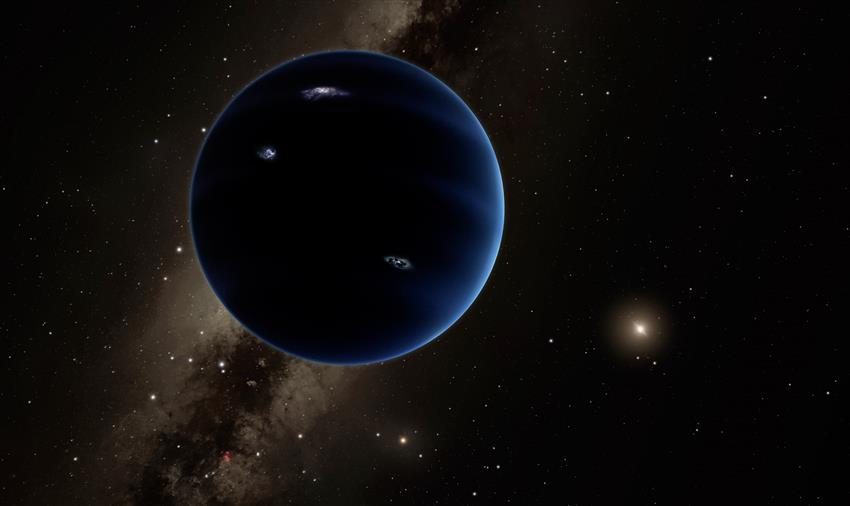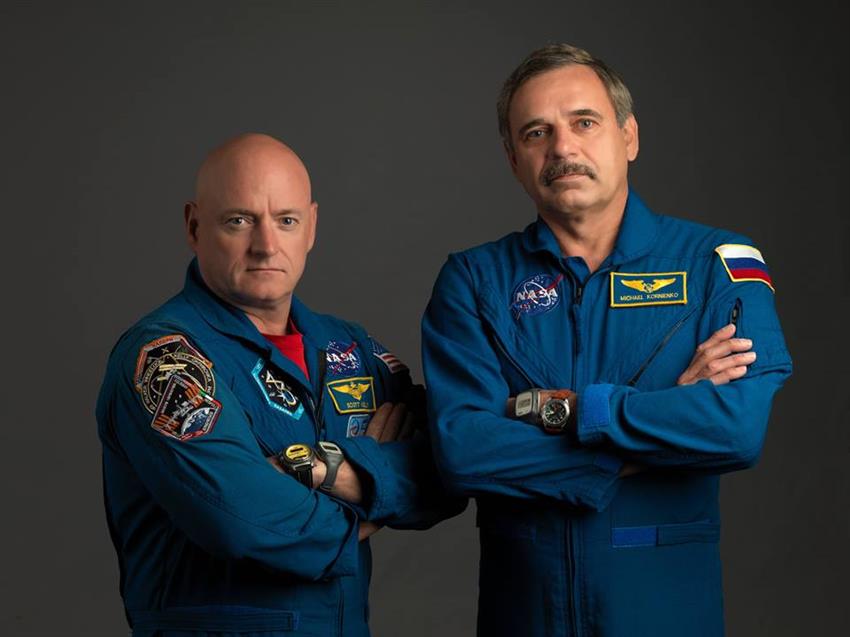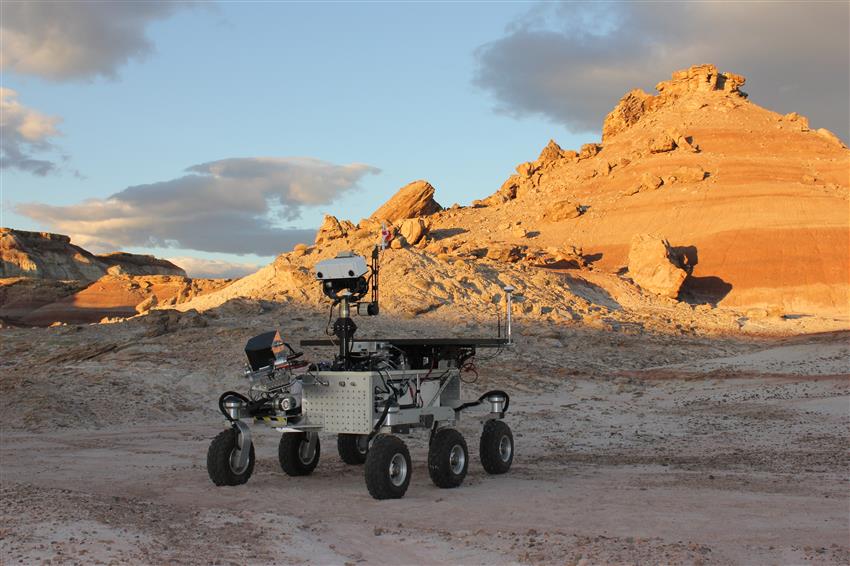2016 in review - 15 highlights for space, science and the CSA!

The end of the year is a great occasion to look back on the excellent work that was done in space-related disciplines around the world. Here are some notable events of , including some proud moments for the Canadian Space Agency (CSA). Happy New Year!
January 20, 2016 – Researchers find evidence of a ninth planet in our solar system
Researchers at the California Institute of Technology discovered new evidence that a ninth planet 10 times the mass of Earth might exist in the outer solar system. Although "Planet Nine" has not been observed directly, the abnormal motion of multiple objects in the Kuiper Belt suggests the gravitational signature of a giant planet.
- Gravitational waves are detected for the first time, 100 years after Einstein's prediction
Gravitational waves were finally detected, 100 years after Einstein's prediction, by the Laser Interferometer Gravitational-wave Observatory (LIGO)! Gravitational waves are the beginning of a new era of astronomy, providing a new way of looking at the universe. The unprecedented information carried by those waves could eventually offer insight into the Big Bang.
2016-02-19 – CSA astronaut David Saint-Jacques explains the historic detection of gravitational waves that was announced last week. (Credits: CSA, JPL-Caltech, NASA, LIGO Scientific Collaboration, Massachusetts Institute of Technology (MIT))
- Scott Kelly and Mikhail Kornienko complete one-year mission on the ISS
After a year in space, NASA astronaut Scott Kelly and Russian cosmonaut Mikhail Kornienko landed safely in Kazakhstan on . The one-year mission will help us understand how long-duration spaceflight affects the human body. This is an important step towards deep space exploration and an eventual journey to Mars.
During his 340 days on board the International Space Station (ISS), Scott Kelly mastered the art of space photography. Here are 20 amazing pictures from astronaut Scott Kelly's year in space.
- - Canadarm2 attaches the first expandable module to the ISS
Canadarm2 attached the first expandable module to the ISS during the night of -. Canadarm2 removed the Bigelow Expandable Activity Module (BEAM) from Dragon's trunk and installed it on the ISS. For future space travels to the moon or Mars, such expandable modules could be used as habitable structures, increasing habitable area and lowering the mission's costs.
- Canadarm2 celebrates its 15th anniversary
, marked the 15th anniversary of the launch of Canada's iconic second-generation robotic technology, Canadarm2. Since its debut in space, the 17-metre robotic arm has proven to be an invaluable addition to the ISS by assembling crucial elements of the Station, assisting in spacewalks, catching a multitude of spacecraft and unloading many payloads. Here are 15 pictures to highlight the incredible 15 years of Canadarm2.
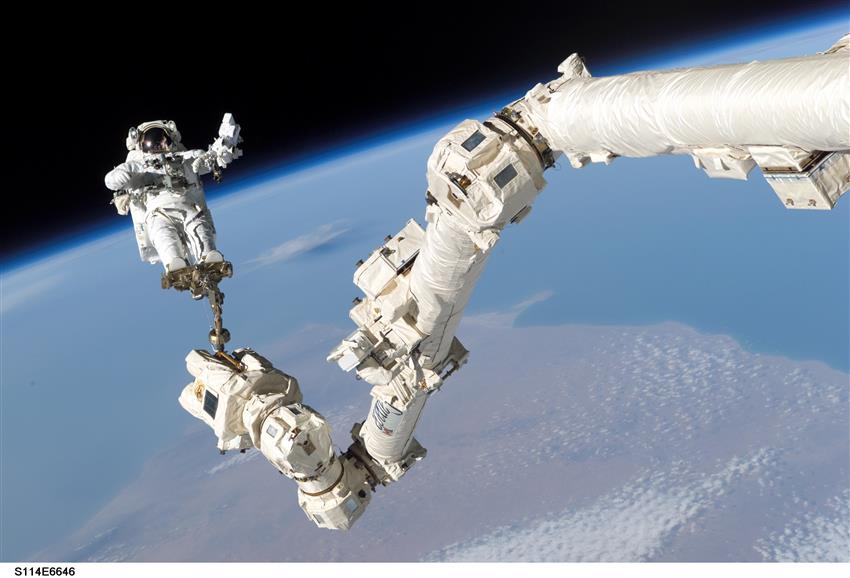
– Mission STS-114 was known as "The Return to Flight," being the first shuttle launch since the Columbia tragedy. Among its many tasks, Canadarm2 assisted astronauts during their spacewalks. In this image, NASA astronaut Stephen Robinson is held aloft by Canadarm2 during the crew's third spacewalk. (Credit: NASA)
– Canadian astronaut David Saint-Jacques assigned to fly to space in 2018
It was announced on , that Canadian astronaut David Saint-Jacques will be the next Canadian to fly to space in 2018. He has been assigned to a six-month mission aboard the ISS. This mission will be David's first time in space and will mark the 17th space flight for the Canadian astronaut corps.
Expedition 58 will launch aboard a Russian Soyuz rocket in to join an international crew onboard the orbiting laboratory. In addition to his extensive training, the Quebec native will bring his expertise in medicine, engineering and astrophysics to the crew. During his mission, David will also test the innovative Canadian technology Astroskin, a smart shirt that will bio-monitor our astronauts' vital signs.
- CSA launches 4th astronaut recruitment campaign
For the first time since 2008, the CSA announced a new astronaut recruitment campaign. It began on , and will end with the announcement of two new Canadian astronauts in the summer of 2017.
– Canada launches its latest microsatellite, M3MSat
Canada's Maritime Monitoring and Messaging Microsatellite (M3MSat) was launched successfully by the Indian Space Research Organisation, from Sriharikota, India. M3MSat is advancing Canada's capabilities to monitor maritime traffic from space. It is also testing a device that could change the way we monitor the health and safety of satellites and help extend the life of satellites in orbit.
2016-06-21 – Canada's M3MSat was launched successfully by the Indian Space Research Organisation, from Sriharikota, India. M3MSat will advance Canada's capabilities to monitor maritime traffic from space. (Credit: Door Darshan (DD))
– NASA's Juno spacecraft enters Jupiter's orbit after 5-year journey
NASA's Juno spacecraft successfully entered Jupiter's orbit on , after a journey of 2.8 billion km that took almost five years! The Juno mission's goal is to study the solar system's largest planet to understand its origin and evolution, map its magnetic field, look for solid planetary core, and much more.
- Dextre, the Canadian robotic handyman, works with spacewalkers for the first time
Dextre helped astronauts install a new docking adapter on the ISS. This delicate operation marked the first time that Dextre handed off a payload directly to an astronaut. An existing docking port on the ISS was converted into a spaceport able to welcome the upcoming new US commercial crew vehicles. This means that crew vehicles other than the Russian Soyuz will soon be able to dock to the ISS.
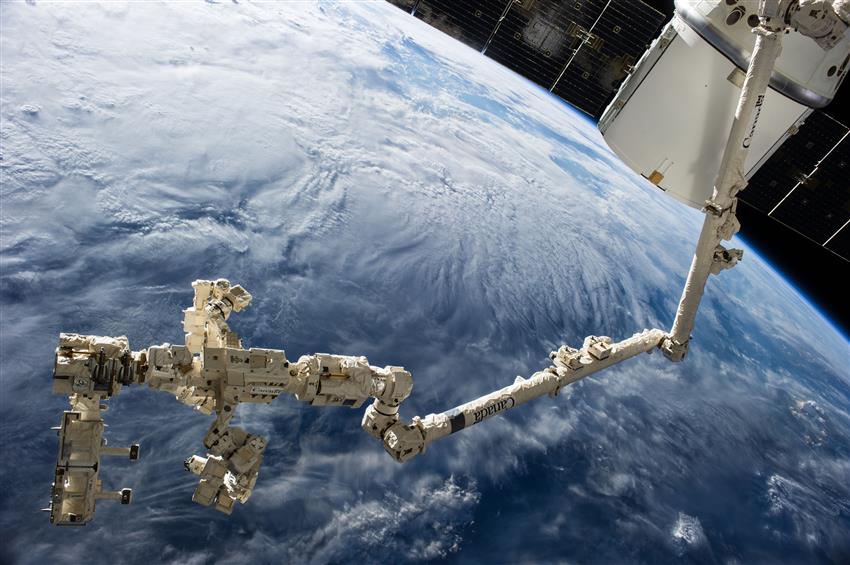
– The ISS's Canadarm2 and Dextre, also known as the Special Purpose Dextrous Manipulator (SPDM), carry the RapidScat instrument assembly after removing it from the trunk of the SpaceX Dragon cargo ship (upper right), which is currently docked to the nadir port of the Harmony node. The RapidScat was then manoeuvered for attachment to the nadir adapter that is affixed to the Station's Columbus laboratory. (Credit: NASA)
– Potentially habitable planet is discovered orbiting the nearest star to our Sun
Planet Proxima b is a rocky planet that was detected orbiting Proxima Centauri, the closest star from the Sun. Proxima b's orbit would allow it to have liquid water, according to scientists from the Marseille Astrophysics Laboratory (CNRS/Aix-Marseille Université). The planet also has a mass similar to that of Earth, and is in the habitable zone of its star.
- Successful launch of OSIRIS-REx, Canada's 1st participation in an asteroid sample return mission
The OSIRIS-REx Asteroid Sample Return Mission successfully launched on , towards asteroid Bennu. The mission will help answer fundamental questions about how our solar system formed, how life began and how we can avoid asteroid impacts with Earth. Also, the OSIRIS-REx mission will give us a better understanding of one of the most potentially hazardous asteroids currently known to humanity.
The Canadian instrument on board the spacecraft, the OSIRIS-REx Laser Altimeter (OLA), will scan and measure the entire surface of the asteroid to create a highly accurate 3D model of the asteroid, and provide mission scientists with unprecedented information on the asteroid's shape, topography, distribution of boulders, rocks and other surface features.
– This animation provides an overview of how the OSIRIS-REx spacecraft will study the asteroid Bennu, collect a sample and return it to Earth. Canada's contribution to the mission, the OLA, can be seen firing an orange beam at 0:29. This is how the instrument will produce a 3D map of Bennu. (Credit: NASA/Goddard Space Flight Center)
- Scientists see what appear to be water plumes on Jupiter's moon Europa
On , NASA published images of what appear to be water vapour plumes being ejected from Jupiter's moon Europa. Europa is considered one the most promising places in our solar system to search for life beyond Earth because an enormous ocean is believed to exist under its icy crust. If the plumes were to be real, that would mean that scientists could access water from the subsurface ocean without having to drill through kilometres of ice. A sample of water and particles from Europa's ocean would be a game-changer in the search for life elsewhere in our solar system.
– Completion of construction of the James Webb Space Telescope
On October 31, NASA completed the construction of the James Webb Space Telescope by adding the final layer of the telescope's gigantic sunshield. Extensive testing on the telescope will follow to prove that it will work in space in preparation for its launch in .
The Webb telescope is an international collaboration between NASA, the European Space Agency (ESA) and the CSA. It is the most complex and powerful telescope ever built, and it will study every phase in cosmic history, ranging from the first luminous glows after the Big Bang, to the formation of stellar systems capable of supporting life on planets like Earth, to the evolution of our own solar system.
– – Canada gets ready to one day return a sample from Mars
The Mars Sample Return Simulation (MSRAD)'s main goal is to prepare to bring a sample from Mars back to Earth. In the Utah desert from October 31 to November 18, the mission's science team used the CSA's Mars Exploration Science Rover (MESR) to identify and characterize rocks that may contain signs of life. Selected samples ("cores") were then collected using a drilling tool. They later used the MESR and its manipulator arm and grapple system to capture the sample tubes collected and to store them in containers on the rover. The MESR returned the samples to a mock-up rocket, or Mars Ascent Vehicle (MAV), for delivery.
